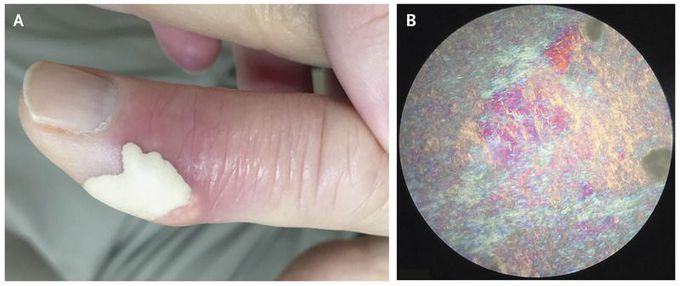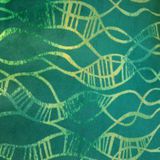


Milk of Urate Bulla
A 71-year-old man with a history of gout and renal transplantation (for which he was receiving cyclosporine) presented with a new blister overlying the radial aspect of the second interphalangeal joint just distal to a preexisting tophus on his right hand (Panel A). The patient reported having had no trauma to the involved area. Examination of the fluid with polarized light microscopy showed sheets of negatively birefringent crystals consistent with monosodium urate (Panel B). The patient was treated with allopurinol, with a daily dose that was progressively increased from 100 mg to 300 mg until the serum uric acid measurement was 5 mg per deciliter (297 μmol per liter) or less. Shortly thereafter, his symptoms abated. Gout is a common disorder that has an increased incidence after renal transplantation. Tophi or simply inflamed joints are the most common presentations, although in rare cases bullae filled with milk of urate can develop. These gout bullae have been associated with mild repetitive trauma, not unlike the formation of traditional blisters. The goal of treatment is typically a serum uric acid level of less than 6 mg per deciliter (357 μmol per liter) in nontophaceous disease or 5 mg per deciliter in tophaceous disease.


